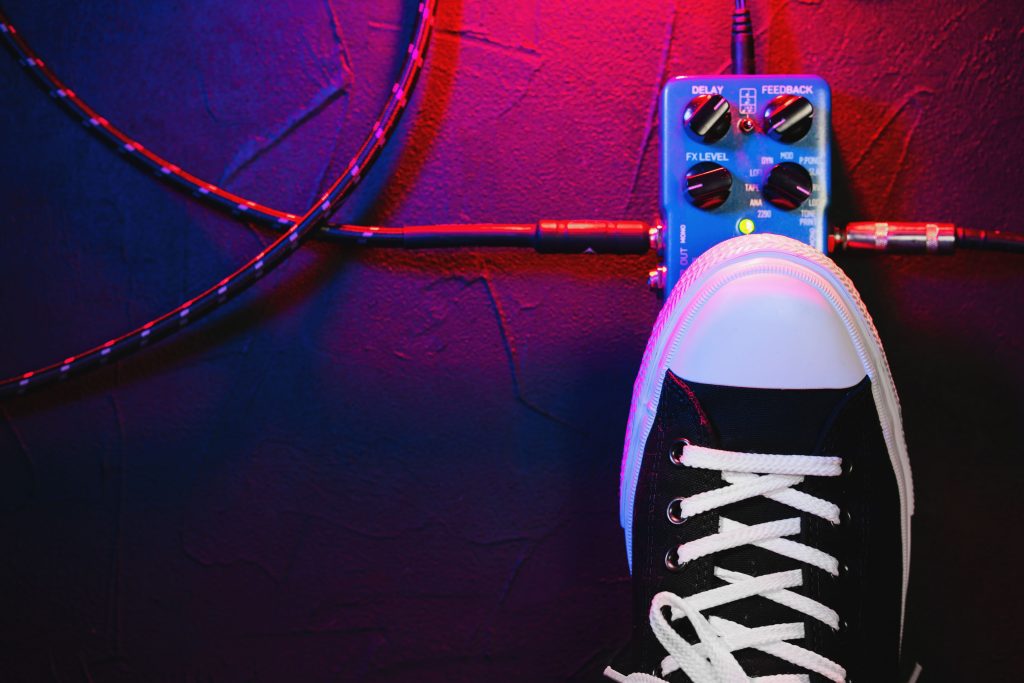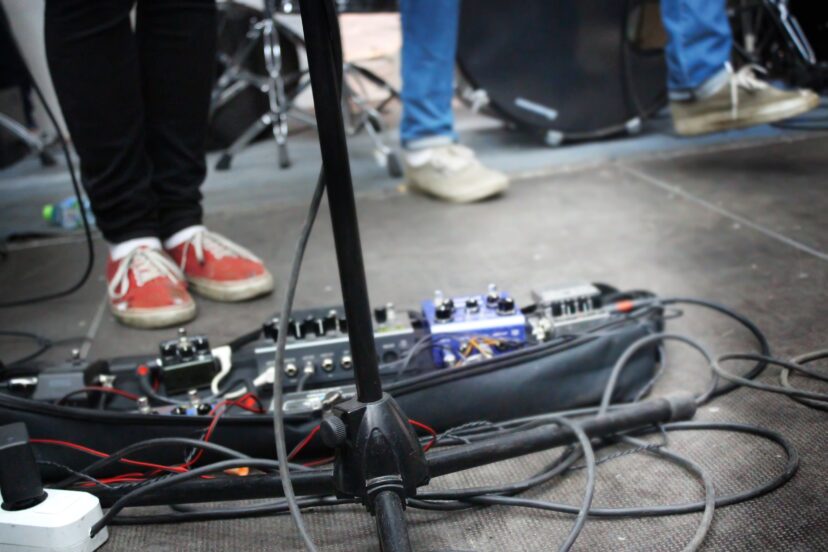Essential Bass Pedals: Here’s a Quick Guide
Intro
Are you feeling overwhelmed by the sheer amount of information available about essential bass pedals? Don’t worry – you’re not alone! With so many bass pedals on the market, it can be difficult to know which ones are truly essential for your setup. Fortunately, this quick guide provides the basics on the most essential bass pedals and recommended products so you can make an informed purchase decision. From boosting your signal to adding effects to your sound, the right bass pedal can make all the difference in your performance.
Understanding the Basics of Bass Pedals
To understand the basics of bass pedals, it’s important to first understand the role they play in shaping your sound. Bass pedals are a type of bass guitar equipment that allow you to manipulate and enhance your bass tone. They can be used to add effects, control dynamics, or simply boost your signal.
One key aspect to understand is the different types of bass pedals available. There are various categories, such as distortion pedals, modulation pedals, and compression pedals. Distortion pedals, for example, can add grit and crunch to your tone, while modulation pedals can create unique sounds like chorus or phaser effects. Compression pedals, on the other hand, help to control the dynamics of your playing by evening out the volume levels.
When selecting bass pedals, it’s important to consider your own musical style and preferences. Experimenting with different pedals can help you find the ones that best suit your sound and playing style. Additionally, it’s important to understand the different controls and settings on each pedal, as they can greatly impact your overall tone.
Overall, bass pedals are an essential part of any bass guitarist’s toolkit. By understanding the basics and experimenting with different pedals, you can unlock a world of possibilities and take your bass playing to new heights.
Why You Need Essential Bass Pedals for Your Sound
Bass guitar equipment is crucial for any bassist looking to enhance their sound and take their playing to the next level. While it’s possible to create music with just a bass guitar, adding essential bass pedals to your setup opens up a whole new world of sonic possibilities.
First and foremost, essential bass pedals allow you to shape and customize your tone. Whether you’re looking for a smooth and clean sound or a distorted and gritty edge, the right bass pedal can help you achieve it. By adding effects like distortion, modulation, and compression, you can create unique sounds and add depth to your playing.
In addition to tone shaping, bass pedals also allow you to control your dynamics. Compression pedals, for example, help even out volume levels, giving you a consistent and balanced sound. This can be especially useful for live performances where you may need to cut through the mix or add sustain to your notes.
Furthermore, bass pedals can enhance your overall performance. By using pedals to boost your signal, you can ensure that your bass cuts through the mix and is heard clearly. This is especially important when playing with a band or in a live setting.
Overall, essential bass pedals are necessary tools for any bassist who wants to expand their sonic palette, add versatility to their playing, and enhance their overall sound. Don’t be overwhelmed by the options available – with the right pedals, you can unlock your full potential as a bass player.

Recommended Essential Bass Pedals for Beginners
If you’re new to using bass pedals, it can be overwhelming to know where to start. That’s why we’ve compiled a list of recommended essential bass pedals for beginners. These pedals are a great starting point for anyone looking to enhance their bass sound and experiment with different effects.
First on the list is a good quality tuner pedal. This pedal is essential for ensuring your bass is always in tune, which is crucial for any musician. Look for a tuner pedal that is accurate and easy to use, with a clear display.
Next, a basic overdrive pedal is a great addition to any beginner’s pedalboard. This pedal will add some grit and distortion to your tone, giving your bass a heavier and more aggressive sound. It’s a versatile pedal that can be used for a range of genres and playing styles.
For those looking to add some modulation effects to their sound, a chorus pedal is a must-have. Chorus pedals create a shimmering and thick sound, adding depth and dimension to your bass tone. They’re great for creating a more spacious and ambient sound.
Finally, a compression pedal is a valuable tool for any bass player, especially beginners. This pedal helps to even out the dynamics of your playing, giving you a more consistent and controlled sound. It can also add sustain and punch to your notes.
Overall, these recommended essential bass pedals for beginners will help you explore different tones and effects, and take your bass playing to the next level. Invest in these pedals to start building your own unique sound and style.
How to Incorporate Essential Bass Pedals into Your Playing
Once you’ve invested in essential bass pedals, it’s time to learn how to incorporate them into your playing to enhance your sound. The key to successfully incorporating bass pedals into your playing is experimentation and practice.
Start by familiarizing yourself with each pedal’s controls and settings. Understand how each parameter affects your tone and dynamics. This will allow you to create a wide range of sounds and textures.
Next, consider the musical context in which you’ll be using your bass pedals. Are you playing in a band or recording in a studio? Adjust your pedal settings accordingly to ensure your bass cuts through the mix and complements the other instruments.
Testing, Testing 1..2..3
Experiment with different combinations of pedals to create unique sounds. For example, try using a distortion pedal in combination with a compression pedal to achieve a punchy and aggressive tone. Explore the possibilities and don’t be afraid to think outside the box.
Practice incorporating the pedals into your playing gradually. Start by adding subtle effects and gradually increase the intensity as you become more comfortable. Use the pedals to add texture, dynamics, and depth to your basslines.
Conclusion
Finally, don’t forget to trust your ears. Use your intuition and personal taste to guide your pedal choices and settings. Remember, the ultimate goal is to enhance your sound and express yourself as a musician.
Incorporating essential bass pedals into your playing takes time and practice, but the rewards are worth it. Experiment, be patient, and have fun exploring the endless possibilities that bass guitar equipment can offer.
FAQ’s
What are some common effects used in bass pedals?
Bass players use a variety of effects pedals to shape their tone, add texture, and create unique soundscapes. Here are some common effects used in bass pedals:
- Overdrive/Distortion/Fuzz: Adds warmth, grit, or aggressive distortion to the bass signal. Some are designed specifically for bass to retain low-end clarity.
- Compressor: Evens out the dynamic range of the bass, ensuring that all notes are heard at a consistent volume. It can also add sustain to notes.
- Equalizer (EQ): Allows for precise shaping of the bass tone by boosting or cutting specific frequency ranges.
- Chorus: Adds a lush, shimmering effect by slightly detuning and doubling the bass signal, making it sound as though multiple instruments are playing.
- Envelope Filter (Auto-Wah): Produces a dynamic, wah-like effect based on the player’s attack. It’s often used in funk music.
- Octaver/Octave Up/Octave Down: Adds a synthesized note either an octave above or below the played note, enriching the sound or providing a sub-harmonic rumble.
- Delay: Repeats the bass signal at adjustable intervals, creating an echoing effect.
- Reverb: Simulates the sound of the bass being played in different types of rooms or spaces, from small rooms to vast halls.
- Phaser/Flanger: Modulates the bass signal to produce a sweeping, jet-like or swirly sound.
- Loopers: Allows players to record a bass line and then play over it, great for solo performers or for creating layered soundscapes.
- Synth: Converts the bass sound into a synthesized tone, allowing for a wide range of electronic and otherworldly sounds.
- Noise Gate: Cuts off the signal when the bass is not being played, eliminating any unwanted noise or hum.
- Tuner: Not an effect per se, but a crucial tool for bass players to ensure their instrument is in tune.
- Multi-effects Pedals: These combine several of the above effects into one unit, allowing for a variety of sounds and easy switching between them.
While there are many other specialized effects available, these are some of the more common ones that bassists might incorporate into their rigs. Each effect offers a unique tonal palette that can be tailored to suit various musical styles and personal preferences.




